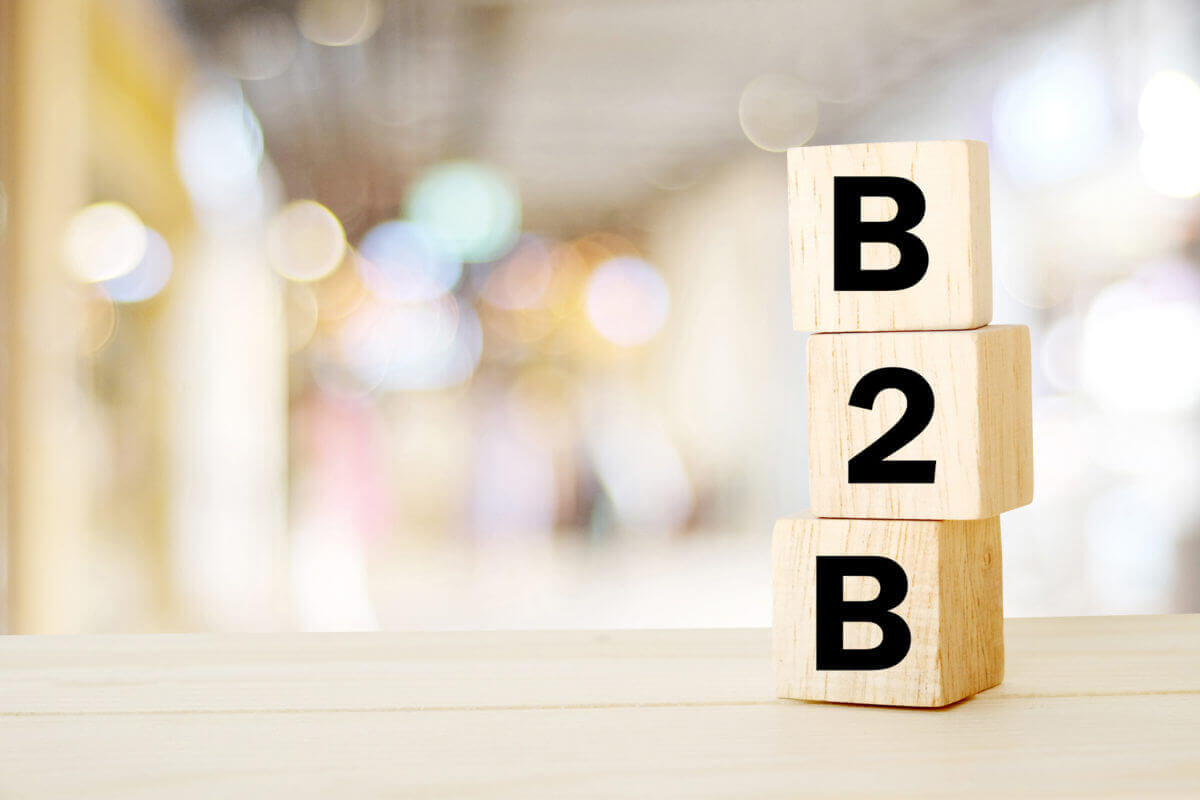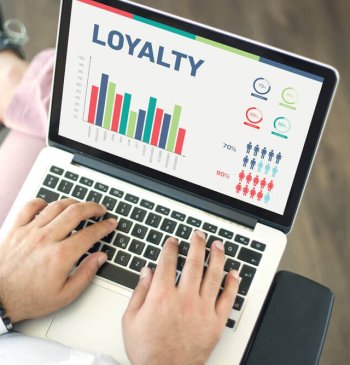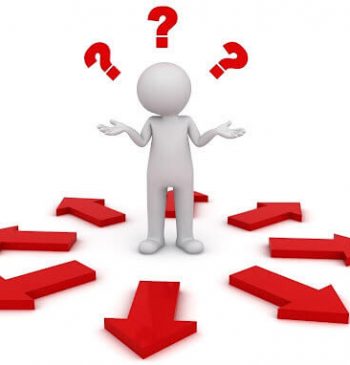22 Sep

Today, the competition is increasingly fierce in service industries. Brands have long noticed the importance of creating a competitive advantage through brand strategies. In the B2B landscape, this phenomenon would apply to a more complex nature. However, it has the same significance as in the B2C context. For a far more crowded and multidimensional landscape, this requires another parameter called brand loyalty. We’ll investigate why brand loyalty is so important in B2B marketing. What is B2B loyalty, and how is it accomplished?
What is Brand Loyalty?
Brand loyalty is a complex and multifaceted concept where customers develop a strong, consistent preference for a particular brand. This loyalty goes beyond repeated purchases; it’s an emotional attachment and a sense of trust and reliability that customers feel towards the brand. Such attachment often arises from believing that the brand consistently delivers quality and satisfaction, aligning with the customer’s values or providing a sense of nostalgia.
Loyal customers perceive a high value in their chosen brand, often considering it the best balance of quality, price, and service, making it preferable over competitors. This perceived value, combined with emotional attachment, leads them to stick with the brand and recommend it to others, effectively becoming brand ambassadors.
One key aspect of brand loyalty is the resistance to competition. Loyal customers are less likely to be swayed by competitors, regardless of marketing tactics or price incentives. Their commitment often makes them immune to competitors’ efforts. Furthermore, for many individuals, their brands become part of their identity. They select brands that reflect their personality, status, or values. This identification further reinforces their loyalty, making the brand a significant part of their lifestyle.
Difference Between Brand Loyalty and Customer Loyalty
Brand and customer loyalty are closely related concepts in marketing and consumer behavior, yet they differ. Both terms refer to the likelihood of a customer continuing to purchase from a company, but they stem from different motivations and exhibit different characteristics. To highlight the differences, here’s a comparison table:
| Factor | Brand Loyalty | Customer Loyalty |
| Definition | The preference for a specific brand over others driven by emotional attachment and trust in the brand. | The likelihood of a customer continuing to purchase from a specific company, is influenced by overall satisfaction and convenience. |
| Key Driver | Emotional connection, personal identity with the brand, and trust in the brand’s consistency. | Satisfaction with the product/service, convenience, and value for money. |
| Focus | On the brand itself and its values, image, or quality. | On the overall experience with the company, including customer service, pricing, and ease of use. |
| Resistance to Change | High resistance to switching brands due to emotional investment. | More flexibility to switch if a better offer or service is available from another company. |
| Advocacy | Often involves public endorsement of the brand due to personal alignment with its values. | May recommend based on good experiences, but less likely to be a passionate advocate. |
Understanding these differences is crucial for businesses developing effective marketing and customer retention strategies.
Parameters of Loyalty Establishment
B2B markets, especially in the B2B eCommerce, have long before started investing in branding. No wonder buzzwords like brand love, attachment, loyalty, etc, have soared in the last decade. Advertising endeavors and buzzwords are important for sure. But B2B professionals know it’s more important for them to be interested in strategies and long-term plans for maintaining relationships in addition to these. Therefore, firms have taken measures to create brand loyalty to influence the purchasing decisions of their partners and stakeholders.
In the long run, brand loyalty results have reciprocal impacts because B2B brands provide value to their shareholders, which cannot be solely explained with numeric facts. Loyalty becomes an essential dynamic in describing how a brand “feels” and becomes as valuable as what they offer as B2B service providers or what they make stakeholders earn in the worldly sense. This can involve professional services, consultation, or the products themselves.
Therefore, as much as it sounds materialistic, the concept of “competitiveness” has entered the “relationship” domain. These all have a powerful impact on the decision-making process of procurement staff. It’s no wonder recent research highlights the importance of brand loyalty in B2B, which is directly related to regulating channel relationships.
Why is Brand Loyalty so Important?
Research suggests that competitiveness today relies on strong brands and effective B2B relationships. Especially for emerging and niche markets, brand loyalty becomes a crucial subject. Merging the need for automation and B2B loyalty, specialists developed B2B loyalty programs. A B2B loyalty program provides insights based on numeric values and reinforces the intangible component of B2B loyalty: relationships. Let’s have a look at the former first.
How to Build Brand Loyalty?
Building brand loyalty is crucial for long-term business success. It involves creating an emotional connection with customers, ensuring consistent quality, and engaging meaningfully. Here’s a condensed overview of effective strategies:
- Consistent Quality and Innovation: Like Apple, you can consistently provide high-quality, innovative products to build trust and loyalty.
- Exceptional Customer Experience: Follow Amazon’s example of offering a seamless, customer-centric experience.
- Emotional Connection and Brand Story: Create a compelling brand story to connect emotionally with customers, similar to Nike’s inspirational messaging.
- Engagement and Community Building: Engage with customers through platforms like social media to build a community, as Starbucks does.
- Loyalty Programs and Rewards: Implement rewarding loyalty programs like Sephora’s Beauty Insider to encourage repeat purchases.
- Personalization and Customization: Personalize experiences and products to meet individual needs, as seen in Coca-Cola’s ‘Share a Coke’ campaign.
- Social Responsibility and Ethics: Align with social and environmental values to attract like-minded customers, a strategy used effectively by Patagonia.
- Consistent and Authentic Communication: Maintain a unique and authentic brand voice across all platforms, similar to Trader Joe’s approach.
- Utilize Customer Feedback: As Microsoft practices, incorporate customer feedback into product development.
These strategies, centered around understanding and valuing the customer, help foster a loyal customer base that repeatedly purchases and advocates for the brand.
How do B2B Loyalty Programs Communicate in Numbers?
A B2B loyalty program is a strong component of strong B2B brand loyalty. A functioning channel is a prominent drive in assessing brand performance. How do we read a complex and multilayered structure like a channel? Apex Loyalty operates on 5 B2B engagement metrics to provide legible data that brands can utilize to understand today and make future insights. Understanding these metrics and what they stand for will give us clues about what matters in the context of a strong brand presence.
The Reflection of Numbers on B2B Loyalty
Apex Loyalty utilizes Enrollment Rate, Redemption Rate, Active Engagement Rate, Point Accumulation Rate, and Content Consumption Rate, which cater to specific purposes. All of them are important and altogether form a meaningful whole. For example, how would you know your customers stick around in a digital landscape? Redemption Rate and Active Engagement Rate help you see how many people benefit from what you provide to make people establish strong bonds with your brand. In other words, it offers a way to see if what you’re developing and offering resonates with your target group.
The context beneath these numbers makes B2B loyalty programs valuable in reinforcing brand loyalty. Ultimately, the B2B environment is about finding and making sense of your niche. Once you find it, your job still needs to be completed. You must find ways based on real data to maintain your presence in your customers’, partners’, or stakeholders’ minds.
Where Apex Loyalty Stands Out
Apex Loyalty is especially powerful in offering a full package of marketing automation products without sacrificing the connection element. With various customizable features, you can tailor and integrate it into your brand how you want your “tone” to sound. Imagine this tone is perceived in any domain you want your presence felt. It can be the daily content sent to your partners’ mailboxes. It can be the reward type to embed within your campaign for a specific group. With Apex Loyalty, you can shape your brand presence and make yourself heard harmoniously with your brand.
You can read our previous post on https://www.apexloyalty.com/5-ways-to-improve-channel-behaviors/











